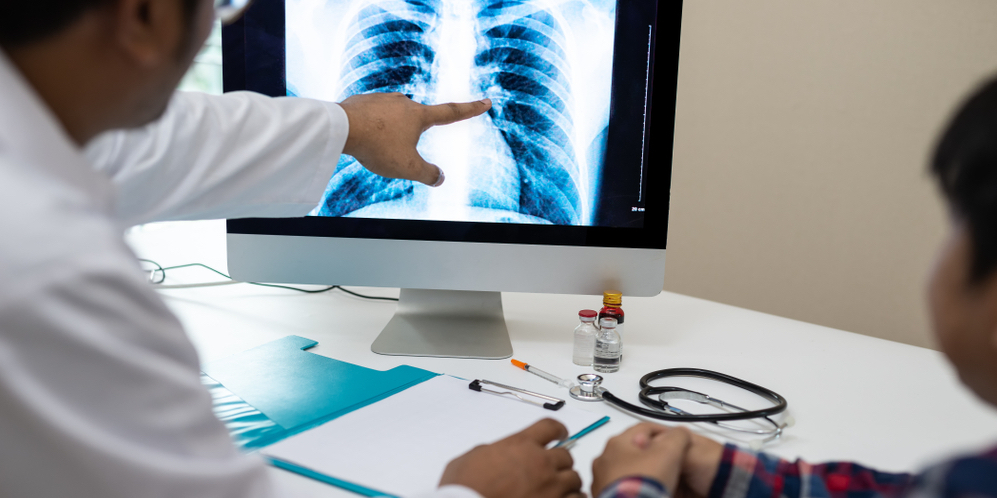Insights for Radiology Staff Burnout Prevention

Burnout is a loss of enthusiasm and emotional and physical energy, a low sense of personal accomplishments, and feelings of depersonalization. Causes of burnout may originate outside of work but affect work, or work may be the sole factor for stress but impact personal wellbeing.
A 2021 report by Current Problems in Diagnostic Radiology showed that while over 50% of healthcare workers experience burnout, radiologists are at even higher risk, with 71% of surveyed radiologists reporting stress in the workplace.
Factors that may contribute to burnout in radiology staff
- Redundancy, or repetitive movements that become boring or cause injury
- COVID-19
- Recent studies reveal that frontline workers show signs of extreme mental and physical fatigue from fear of exposure, working with masks, extra work around disinfecting, long hours, and lack of staff.
- Long work hours
- Complicated or inadequate software
- Too many manual tasks
- A study showed that 23% of radiology technologists felt their work was inefficient and should be automated.
- Lack of promotion and recognition
- Personal problems (outside issues tend to affect work)
- Increase in patient volumes
- Revenue may increase, but increasing the workload may mean longer shifts and can foster burnout.
- Short-staffed
- Doing more with fewer can quickly escalate fatigue and frustration.
Twelve stages of burnout
Over forty years ago, psychologist Herbert Freudenberger studied the symptoms of work exhaustion, chronic fatigue, and substance abuse. He also coined the phrase “burnout.” Along with colleague Gail North, Freudenberger described the twelve phases of burnout widely adapted by psychologists and recognized in today’s workforce.
- A compulsion to prove oneself — obsessed with proving one’s worth
- Working harder — inability to stop working
- Neglect of own needs — mental and physical self-neglect
- Displacement of conflicts — failure to acknowledge or recognize one’s problems and placing fault elsewhere
- Revision of values — core values changing to accomplish work goals
- Denial of emerging problems — intolerance and impatience, along with denial of personal problems
- Withdrawal — seclusion and isolation from family/friends/activities
- Behavioral changes — drug and alcohol abuse, as well as feelings of anger
- Depersonalization — unable to see worth/value in self and others
- Emptiness — feelings of loneliness and numbness
- Depression — loss of hope, sadness
- Burnout syndrome — complete mental and physical breakdown
Signs of burnout
- Absenteeism
- Lower productivity
- Increase in errors that may result in malpractice and injury to patients, self, and staff
- Behavioral changes
- Too many unauthorized breaks
- Spending more time on the computer searching for jobs
- Impact on quality of care
- A negative attitude that impacts the other staff
Staff burnout prevention: Streamlining workflow without sacrificing volume
Work exhaustion is a mental health concern, and Freudenberger’s stages of burnout apply to healthcare as well. However, minimizing the impact of burnout in radiology requires streamlining workflow processes to help with staff burnout prevention without sacrificing patient volumes.
Radiologists experience high rates of burnout. Dividing out cases not in their specialty, including many non-essential administrative tasks, and limiting on-call shifts can help reduce their stress. In addition, being prepared to alter radiology workflow improves efficiency and allows for last-minute changes. Finally, utilizing pro re nata (when needed) people helps prevent the need to cancel patient appointments when short-staffed, improves patient satisfaction, and doesn’t overwork regular employees.
Radiology software is like a cyber-hero for staff burnout prevention. It can automate many manual tasks, improve productivity, and reduce stress. IT systems such as PACS and RIS provide speed, accuracy, automation, and data within minutes. Nova RIS enables end-users to work harmoniously with their environment by helping schedule exams and sending automated patient reminders and fax, email, or text reports to doctors. Utilizing QR codes, CryptoChart gives patients access to their reports and images without the need for passwords and CDs. Fewer phone calls from patients lighten the workload on staff and minimize their tension. NovaPACS offers all-in-one workstations for radiologists to read across various platforms and remotely, giving them mobility and freedom.
Other ways to help with staff burnout prevention
Burnout can happen rapidly, so employers should look for signs of work fatigue, identify the cause, and formulate a solution with employees. For example, management can offer gym memberships and lunchtime massages and ensure that staff members get their breaks. In addition, counseling should be available to help with mental well-being. Businesses should offer support and strive to foster a safe environment for staff to talk without repercussions. Most of all, management and coworkers must listen to each other.
Everyone has a career that gives them the blues at some point. In healthcare, doctors and highly skilled people are in shortage, and facilities can ill-afford to lose them. Therefore, addressing and preventing burnout is critical in retaining staff and operating a thriving imaging center.
Here at Novarad, we believe that the key to a successful imaging center is to work smarter, not harder, to deliver the type of care and outcomes that patients desire.
To see how we can help improve your workflows, feel free to reach out to our workflow specialists today!
%20(3).png?width=1555&height=462&name=Novarad%20EHS%20Logo%20Full%20Color%20(1)%20(3).png)
